The Lomo LC-A is, without much doubt one of the most well known Soviet cameras. Despite being what basically amounts to a very basic, fairly low quality, point & shoot camera, the long term influence its had on the film photography community and industry is fairly huge.. but, there’s load online about all that stuff. As such, I thought I’d write a bit about my personal experiences with this camera – experiences that span at around 15 years and range from initial distaste to me eventually deciding – thanks to shooting only one roll with it – that my latest Lomo LC-A is a keeper!
I’ve had my current Lomo LC-A for a little while now – I put a roll through it back in the spring of 2018 with the intention of writing a bit of a one-roll review. In fact, I started writing this post not long after I’d shot that roll. It’s taken all this time since to finish writing it because every time I start thinking about what I want to write, I find myself coming a little unstuck.
The problem with writing about the Lomo LC-A is that so much of what makes this camera so interesting is its place in the context of modern film-photographic history. The problem with that for me, is that I don’t find writing about the history and background of a camera all that interesting. Additionally, there really isn’t much to be said about it that hasn’t already been said many times before.
Kosmofoto content
Now, I’m sure I could prevent myself from writing about lots of cameras through worrying about what’s already been said, but actually, on this occasion Stephen Dowling over on kosmofoto.com has done such a good job, there really is no point in me getting into the history of it all. In fact, if you don’t know much about the history of this camera, I would say that his post on the original camera and all its derivatives here is a must-read. But, if you really can’t be bothered, the much-abridged version is that this camera was the inspiration for the Lomography movement and subsequent brand. It was also later remade by Lomography as the Lomo LC-A+, which was then followed by the LC-Wide and 120 versions.
The post about the history of this camera isn’t the only worthwhile read over of Komofoto either. Stephen has also written a separate more personal review which can be found here. What’s interesting about that review is that whilst I’ve ended up quite liking the Lomo LC-A, my path to finding favour with it has been very different to Stephen’s. In fact, Stephen’s review provides quite an interesting counterpoint to my story. Stephen’s discovery of the Lomo LC-A started for him a long standing passion for film photography. Conversely, when I was first made aware of the Lomo LC-A, I thought it was cheap rubbish.
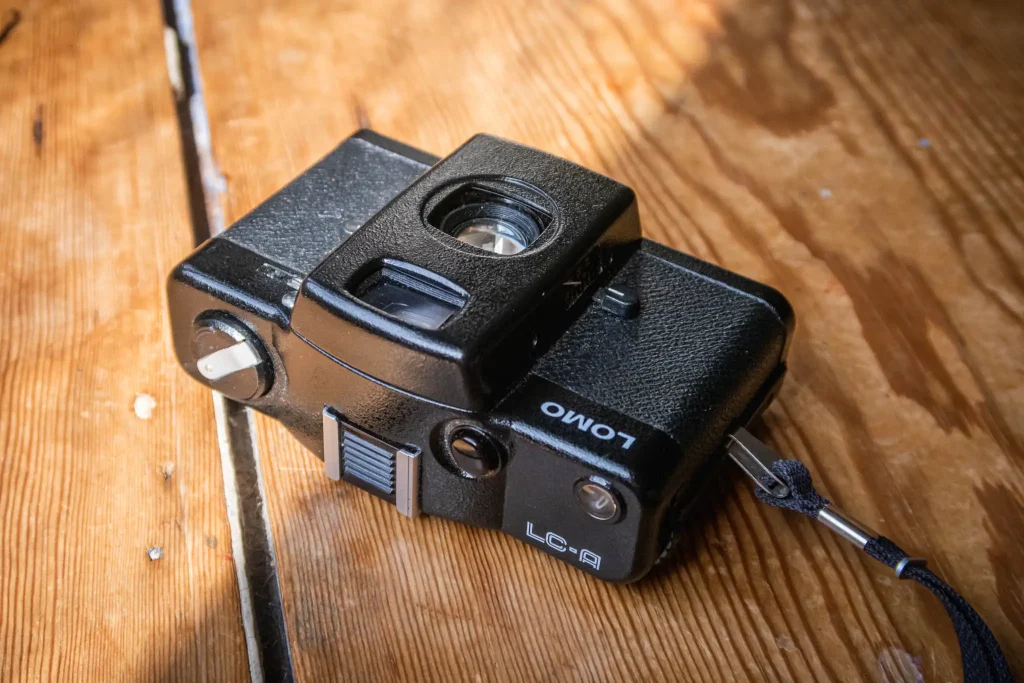
First contact
A mate of mine had bought a Lomo LC-A and had brought it down the pub with him. I’d guess this was around the early 2000s. He knew I was into photography so was showing it to me with some pride. I remember him telling me about the Lomography movement, and all the “shoot from the hip” stuff that they were marketing their products with at the time. I remember rolling my eyes and questioning the intelligence of him shooting a point & shoot camera with a f/2.8 lens in what amounted to a very dark pub. He told me it was fine as the shutter just stays open for as long as is required to expose the film. I remember commenting that this would surely just result in a load of really blurry photos. He assured me that this was exactly his intention – and indeed what made this camera so good… I couldn’t get my head around this at all! There’s endless amounts of cameras that can be shot badly, what made this one so special?
A few years later, I was working in a camera shop and something triggered me to start reading up about these cameras again. I can’t remember the timeline properly, but around that time I was shooting with a Minox 35GT and had developed a bit of a desire to shoot my mates in low-lit pubs with 35mm compact cameras with f/2.8 lenses – though, I should add, I was shooting flash more foten back then.
Either way, it was around that time, and I had found some content online about the Lomo LC-A as being quite good for the sort of thing I was trying to do, so I bought one. It arrived, but to my dismay it didn’t work. So I bought another, which also didn’t work. At this point, my opinion was sealed for a good few years. These were not cameras that I could be bothered with!
The Wide impact
That was until Lomography released the aforementioned wide-angle variant of their remake, the Lomo LC-Wide. Pretty much from the moment that camera appeared on my radar I was intrigued. It offered something no single other camera does: it’s pocket sized and has an ultra-wide angle lens.
Though, for a few reasons that can largely be boiled down to my personal scepticism, I still didn’t get round to buying one. Fortunately, in the end, Hannah from Lomography UK got in touch and asked me if I’d like to borrow one. I couldn’t refuse the loan, my intrigue had entirely got the better of me. Thankfully – not least because the damn thing actually worked – it became a big part of what made me learn to appreciate what it and the indeed the original Lomo LC-A could bring me.
The conventions
There are a couple of conventions that have come from the Lomography movement when it comes to shooting these cameras. The aforementioned slow shutter speeds in lower light, with and without a flash, is something that users of these cameras often embrace. The low optical quality, notable for bright colours, strong contrast and a bit of a vignette is another – shot with some reversal films cross-processed in C41, these cameras do indeed produce quite eye-catching results!

But, perhaps the most notable convention in terms of the way these cameras are shot is the “shoot from the hip” thing that Lomography movement really embraced. The slightly lo-fi aesthetic that these cameras became notable for leant itself to some fairly lackadaisical shooting methods that essentially revolved around not really even bothering to look through the viewfinder.
Again, I was once quite sceptical about all that stuff, but actually – as you’ll read if you dip into my LC-Wide post – I discovered that by embracing this particular convention, I found myself with results I liked and a shooting experience I enjoyed. As I will come to in a moment, I enjoyed it when I shot the Lomo LC-A last spring too – though much to Stephen’s dismay, I’ve so far only shot it with black and white film…
Shooting the Lomo LC-A
The Lomo LC-A design was actually based on another camera I recently reviewed, the Cosina CX-2. The main difference between the two is that the Cosina is quite nice to use, and – at least in my opinion – the LC-A isn’t. More specifically, the Cosina has a nice smooth and easy to use focus control on the bottom-front of the camera. The focus control on the Lomo LC-A is on the side, and feels a lot more fiddly and clunky. Like the Cosina, the original LC-A has a distance scale in the viewfinder. It’s worth noting that he later Lomography LC-A+ doesn’t have this feature – I guess they decided there’s no point in that feature if you’re not going to put the camera to your eye much anyway…?
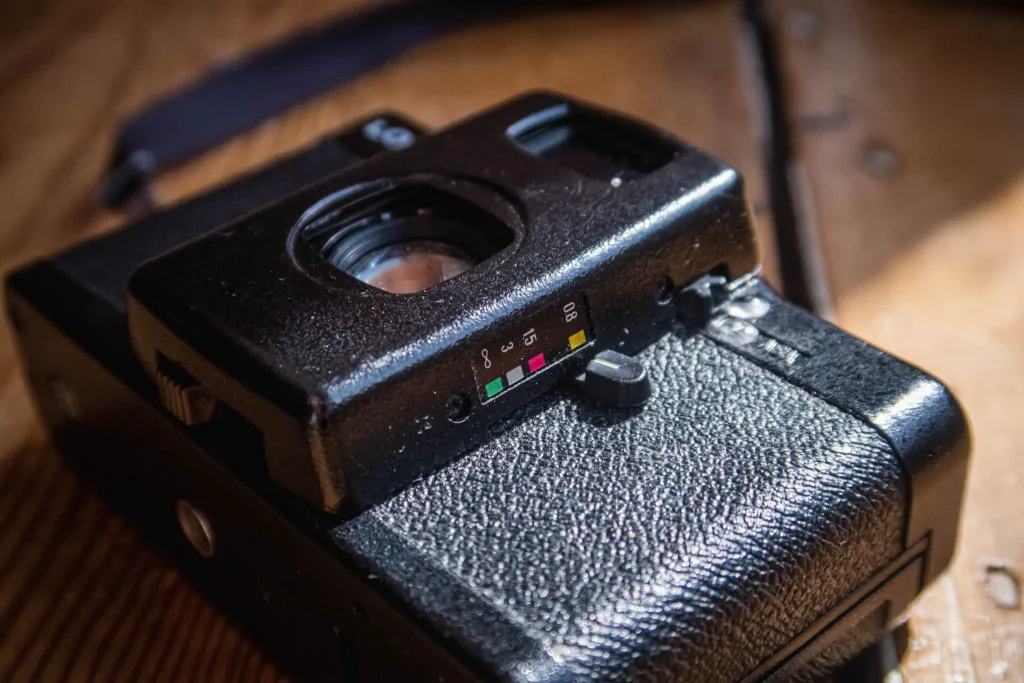
Actually, to be honest, there isn’t much of a compelling reason to put my LC-A to my eye either. The viewfinder is distorted and hazy and the needle that points to the selected distance doesn’t line up with the distance scale properly. There’s also two LEDs in the viewfinder that light up on half press of the shutter button – one in good light, and two when the shutter speed is going to be slower than recommended for hand-holding it. Useful, but these two lights in my camera are so bright that they’re actually quite distracting when shooting – especially in lower light where combined with the haze in the viewfinder, they make seeing through it quite tricky.
The only other controls on the camera are an aperture control for use with a flash (also not a feature on the later LC-A+), and a fiddly ISO dial for setting exposure index. It doesn’t even have a cool twisty front like the Cosina. For all this though, it doesn’t feel too horrible to use. The body of the camera is fairly solid feeling and is of course nice and small and easy to pocket.
Embracing the shoot from the hip style
The real joy I found though is in the shooting style it promotes. It’s easy to see how the Lomo LC-A’s simplicity and slightly crappy functionality inspired the guys who started the Lomography movement. With a roll of film loaded, you set distance, snap and wind on. The combination of the viewfinder being a bit crap, and it not having autofocus means that not only is looking through the viewfinder often not all that appealing, there’s no need to look through it for the benefit of seeing the point in the scene it’s taking its autofocus reading from. It can simply be pointed in the general direction of a subject and shot, with practically zero thought.
The results
The results I got whilst shooting in Birmingham last spring pleased me no end. I used the viewfinder some of the time, and some of the time I didn’t. You can probably tell the shots apart. The lens is softer than average, though the reasonable levels of contrast give the images enough pop. It does indeed vignette quite heavily and pincushion distorts slightly (the opposite to the viewfinder, which barrel distorts). In short, if your looking for high lens quality, you’re definitely in the wrong place, but there is undeniable charm to the results – at least in my opinion.

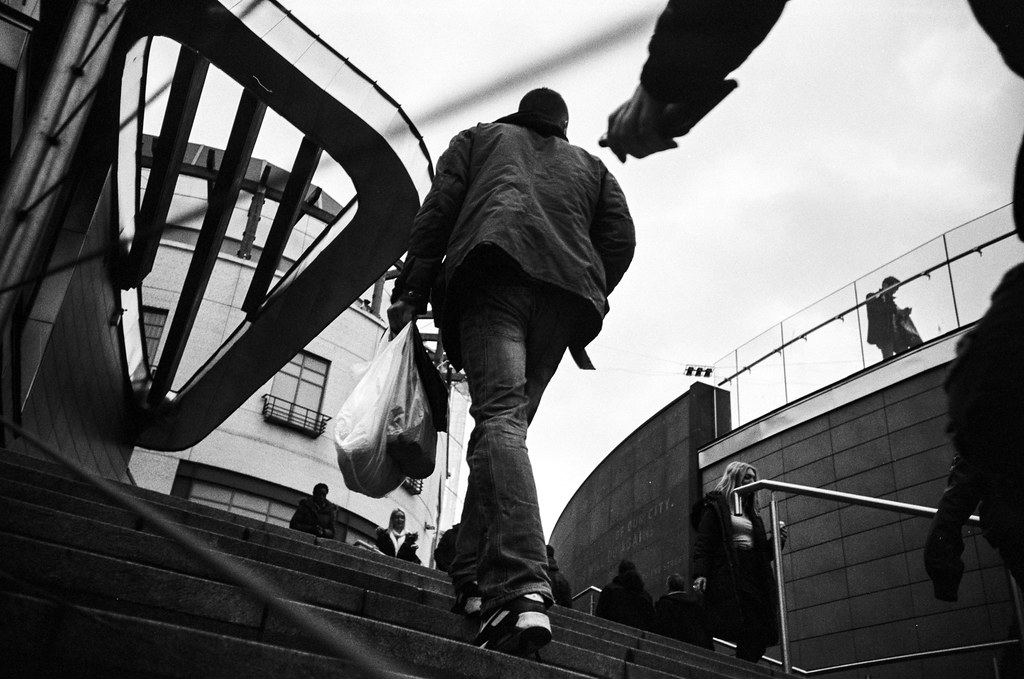
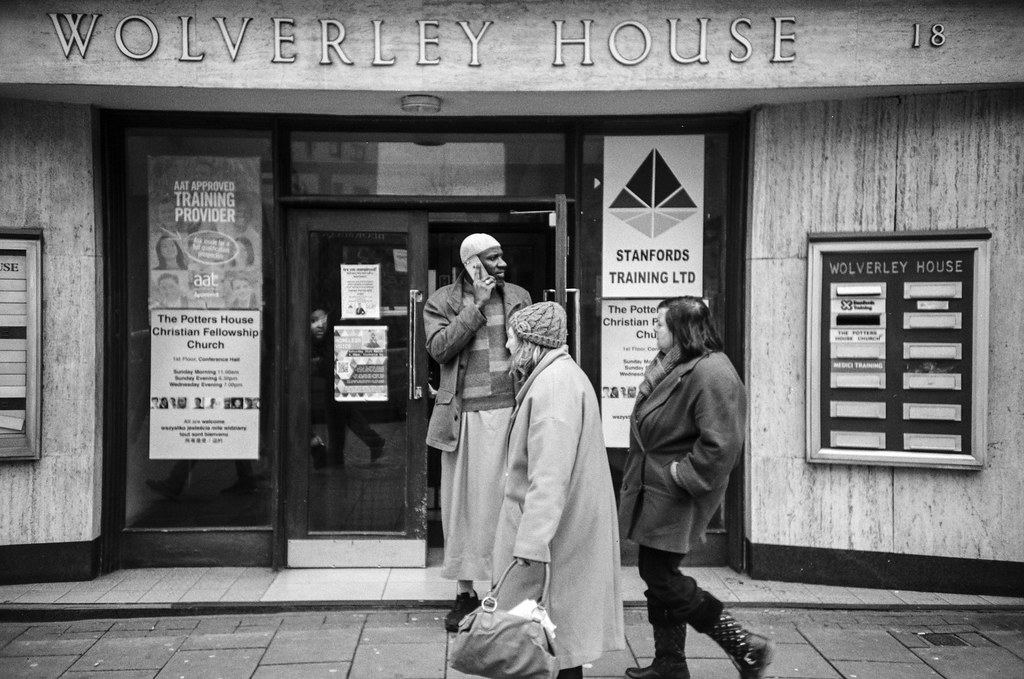
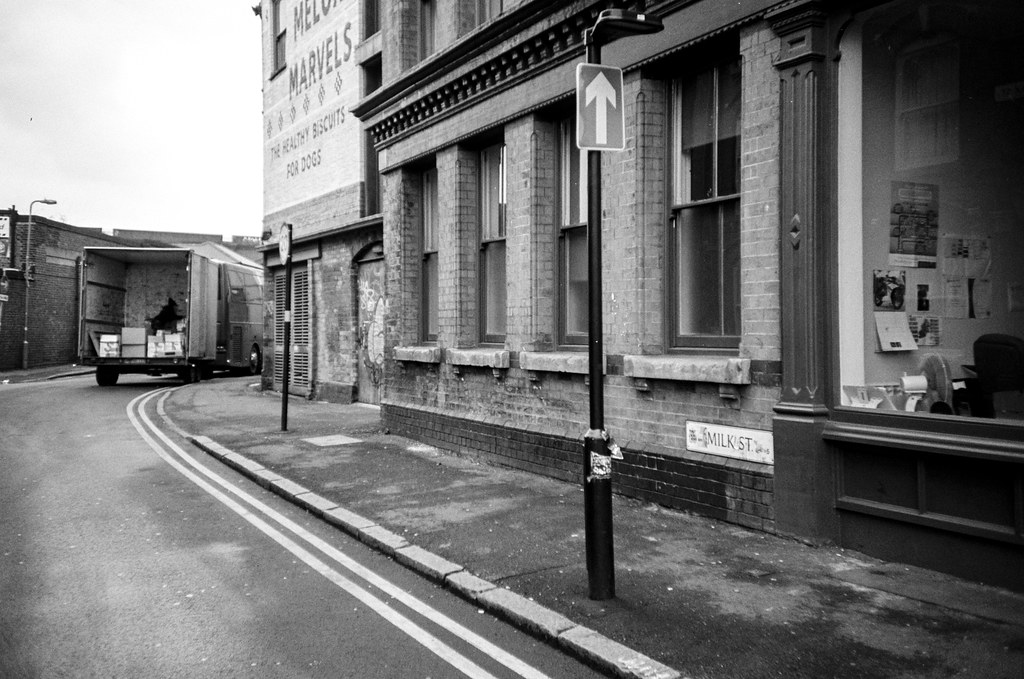
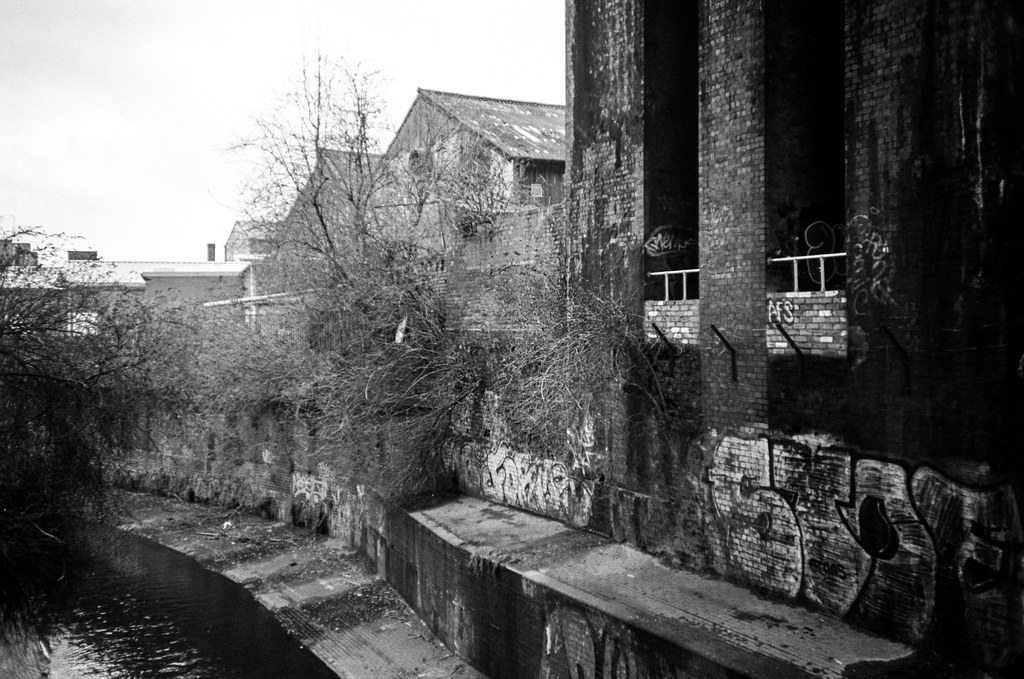
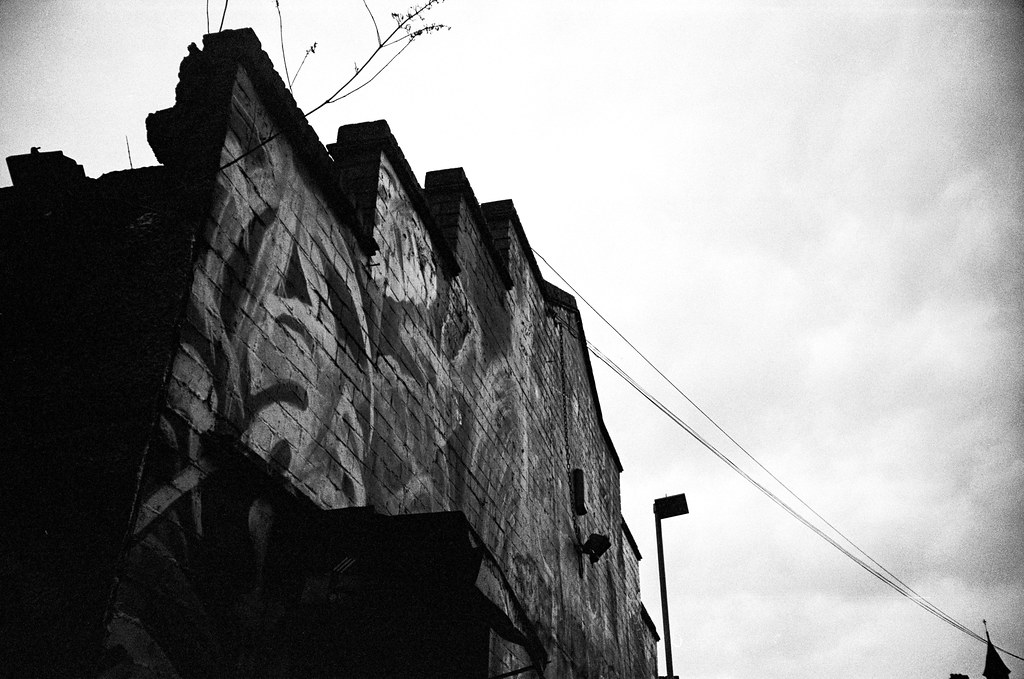
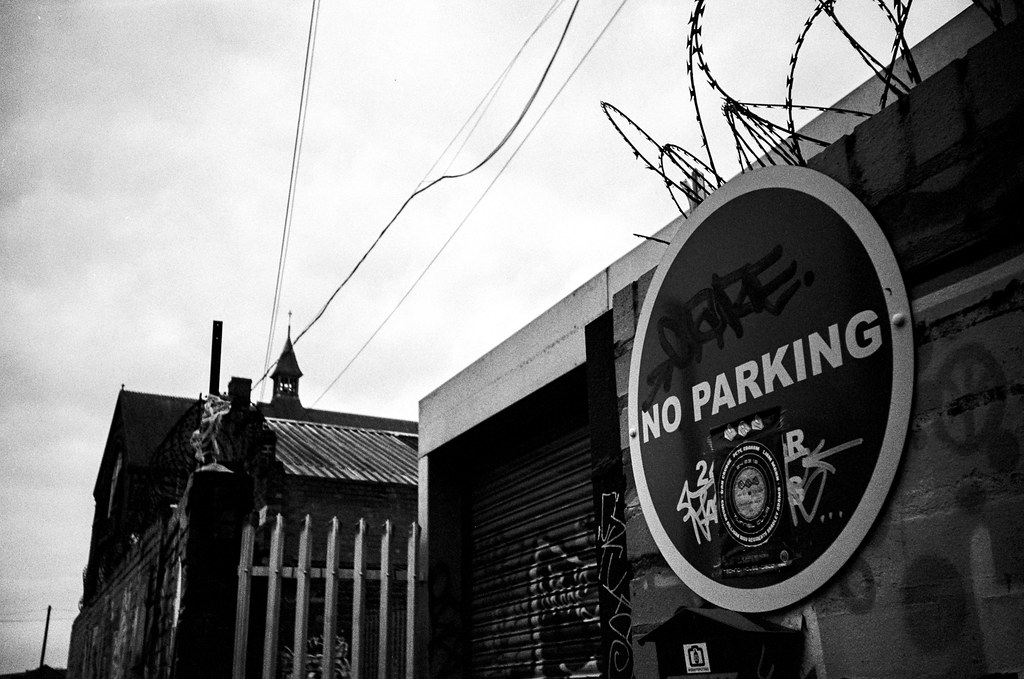
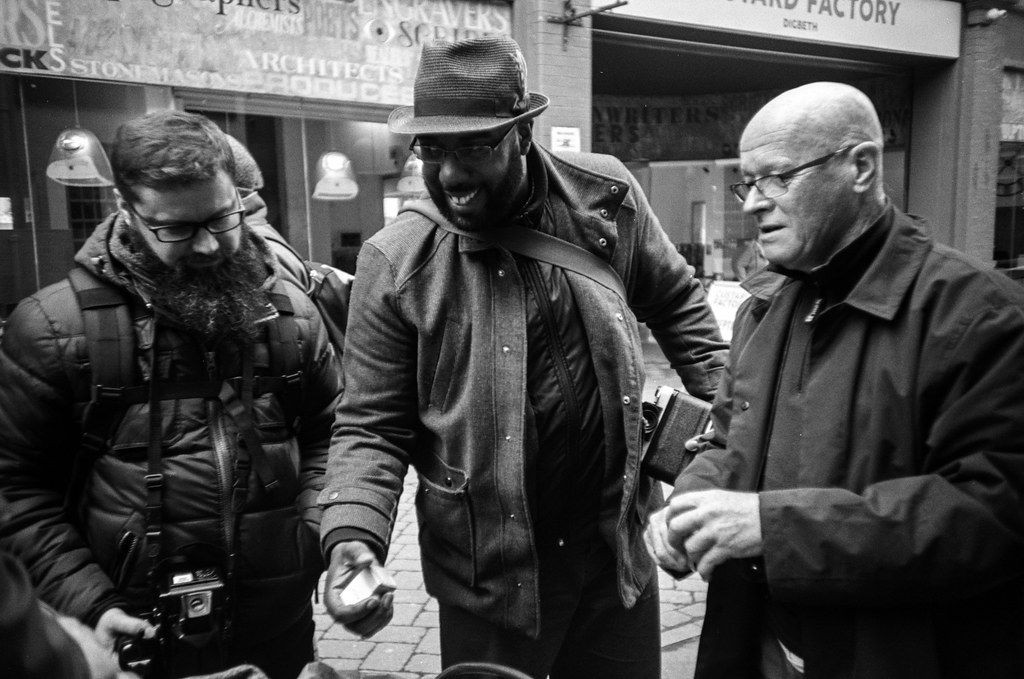
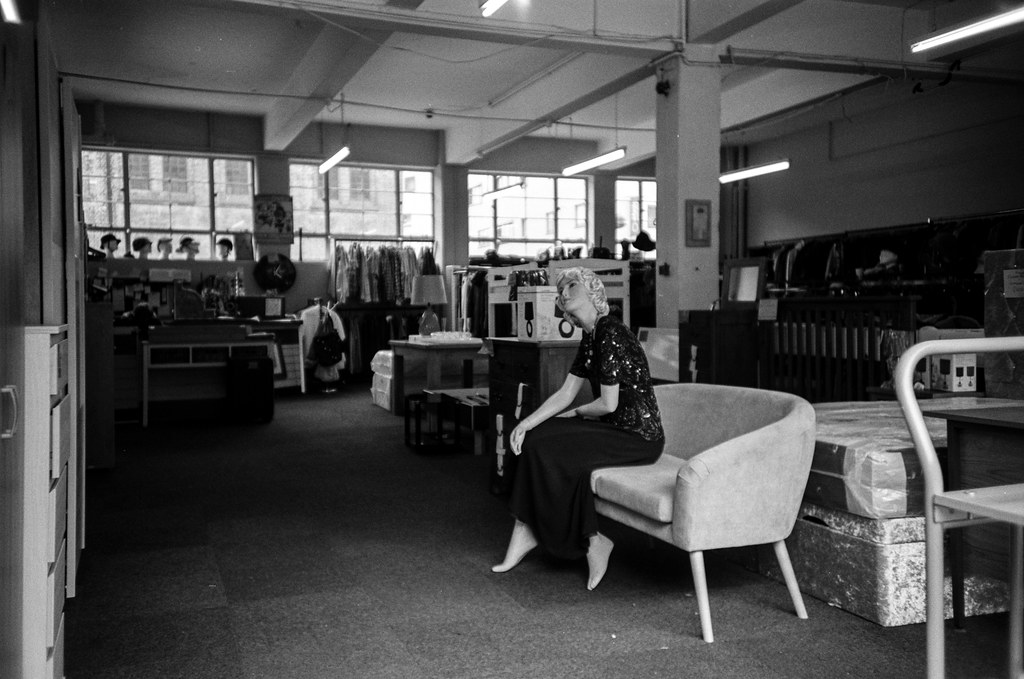
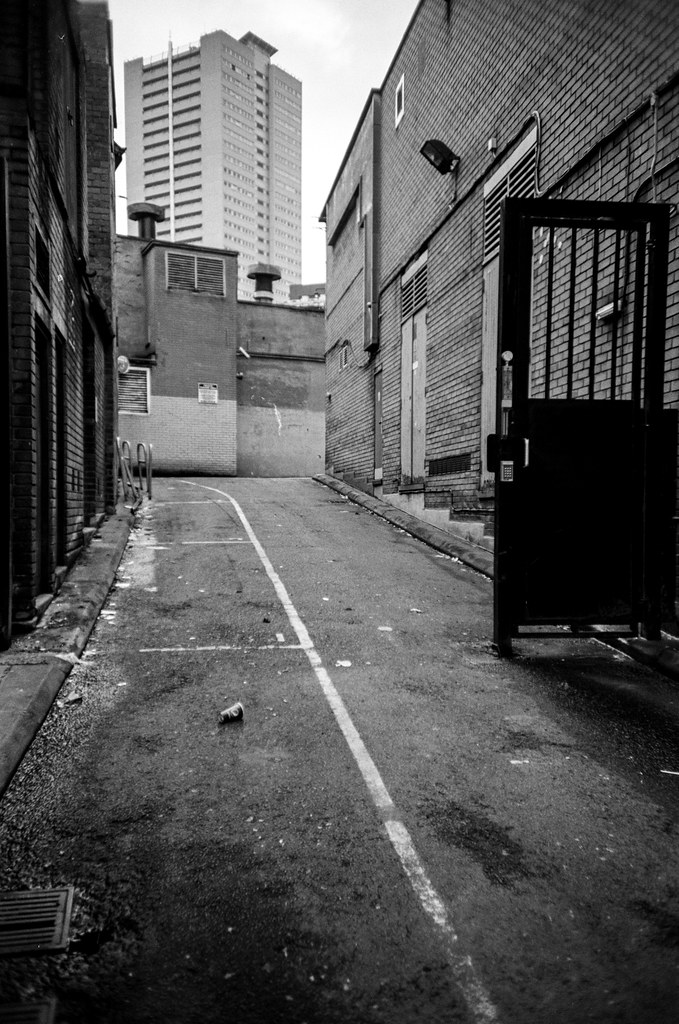
Final thoughts on the Lomo LC-A
Of course, there’s loads of scale focus cameras that offer much of the simplistic approach to photography the Lomo LC-A provides. The Cosina CX-2 is one of them that is arguably nicer to use, and has a slightly better lens. There’s something about the Lomo LC-A though – something that’s meant my Cosina CX-2 is for sale, and the Lomo LC-A has found itself in the keeper pile.
Perhaps some of its appeal to me does come from the shear weight of its place in camera history? It is a bit of an icon, and I really can’t argue with the fact that a lot of the enjoyment I get out of it when shooting with it is the same enjoyment tens, if not hundreds of thousands of others have found in it. But is this because I am following the conventions, or is it because the Lomo LC-A is so perfectly suited to being shot like this? I’m not sure it matters either way… I really enjoyed the roll I shot with the Lomo LC-A last year, and whilst it doesn’t provide an approach to photography I find myself with a desire to partake in all the time, it’s certainly an approach I have a desire to come back to – and why not come back to it with the camera that made the whole approach so popular in the first place…
Share this post:
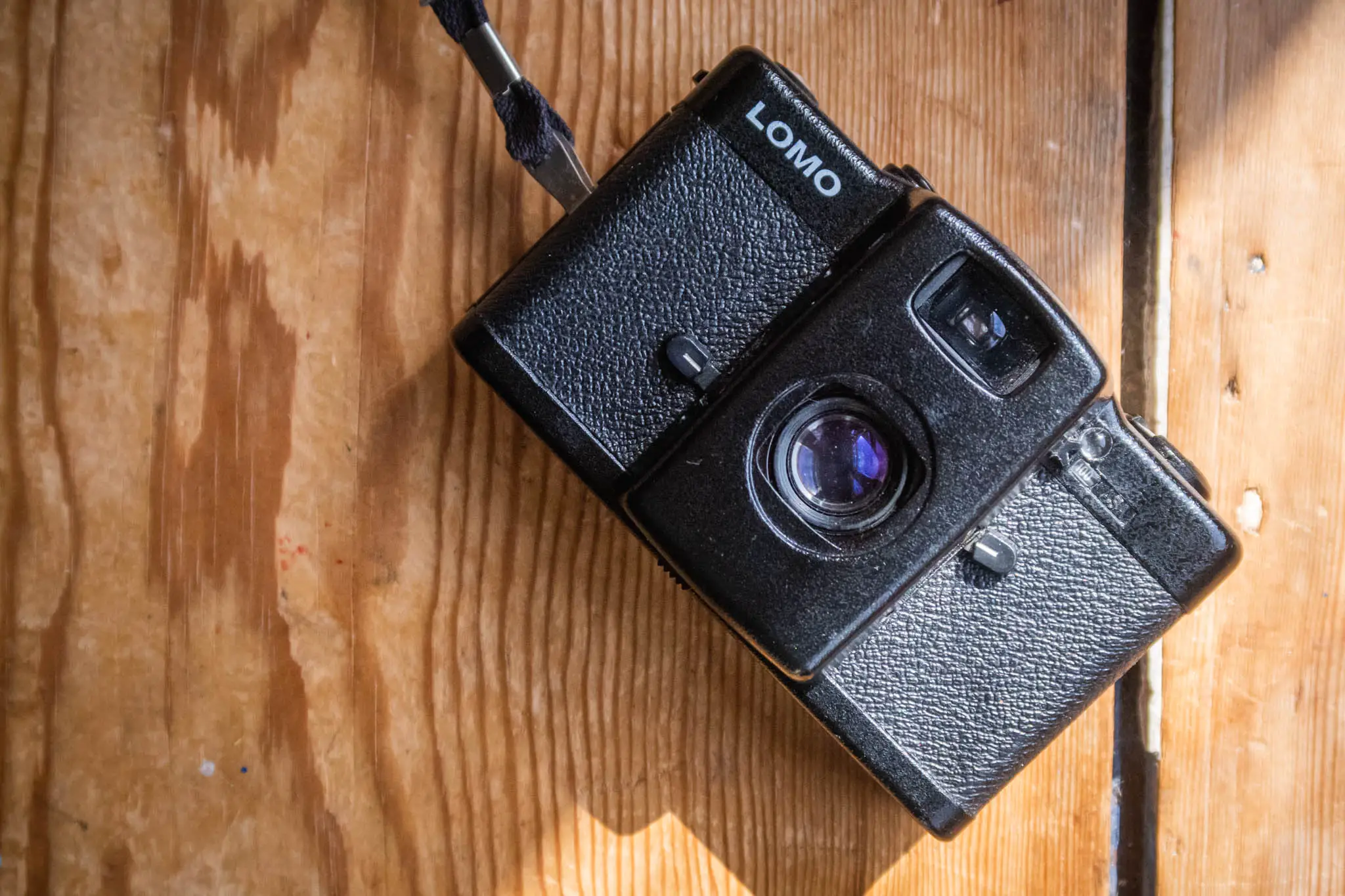








Comments
Alan Duncan on Lomo LC-A – a one-roll / 15-year review
Comment posted: 01/07/2019
Comment posted: 01/07/2019
Flashknappen on Lomo LC-A – a one-roll / 15-year review
Comment posted: 01/07/2019
Steve Boykin on Lomo LC-A – a one-roll / 15-year review
Comment posted: 01/07/2019
Nick Lyle on Lomo LC-A – a one-roll / 15-year review
Comment posted: 01/07/2019
Comment posted: 01/07/2019
Steve Boykin on Lomo LC-A – a one-roll / 15-year review
Comment posted: 01/07/2019
https://www.bhphotovideo.com/c/product/1085426-REG/lomography_lp120int_lc_a_120_medium_format.html
Comment posted: 01/07/2019
Comment posted: 01/07/2019
Bob Janes on Lomo LC-A – a one-roll / 15-year review
Comment posted: 22/06/2020
Comment posted: 22/06/2020
Watch Kosmo Foto's guide to Soviet cameras - Kosmo Foto on Lomo LC-A – a one-roll / 15-year review
Comment posted: 04/10/2020